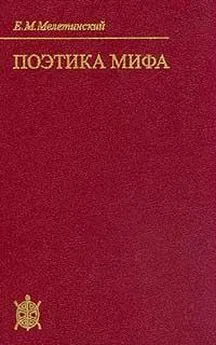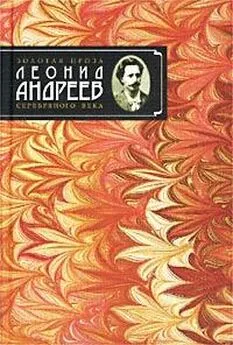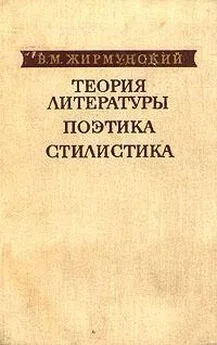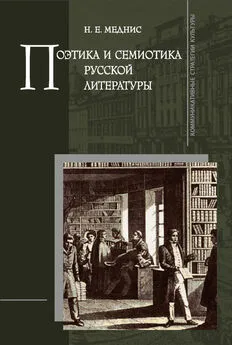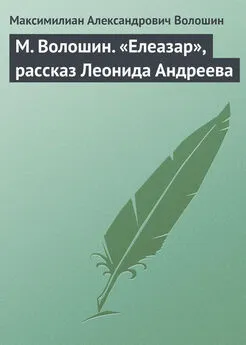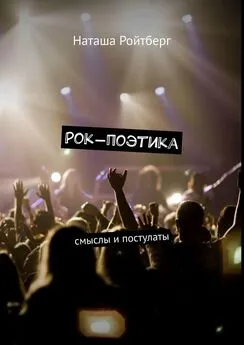Елеазар Мелетинский - Поэтика мифа
- Название:Поэтика мифа
- Автор:
- Жанр:
- Издательство:неизвестно
- Год:неизвестен
- ISBN:нет данных
- Рейтинг:
- Избранное:Добавить в избранное
-
Отзывы:
-
Ваша оценка:
Елеазар Мелетинский - Поэтика мифа краткое содержание
Монография Е. М. Мелетинского посвящена общим проблемам мифологии, анализу современных теорий мифа и критическому рассмотрению использования мифа в художественной литературе и литературоведении XX в. (современное мифотворчество в его отношении к первобытным и древним мифам). Рассматриваются мифология и литература как западного, так и восточного мира.
Поэтика мифа - читать онлайн бесплатно ознакомительный отрывок
Интервал:
Закладка:
The «myth-ritual» literary criticism synthesizes ritualism (the Cambridge group, etc.) and Jungian philosophy with an element of the so-called «new criticism». The application of «myth-ritual» methods to the study of the Greek theatre and Shakespeare or such authors as Dante, Milton or Blake was undoubtedly successful, which is hardly true in the case of study of epos and knighty novels. The quest for implicit mythology in the realistic literature in the 18th and 19th centuries is yet inconvincing in view of possible counci-dence of forms stemming from tradition and those inspired by contemporary life. Thus, although the withdrawal from the traditional plot in «Robinson Crusoe» results in a complete dissociation with classical myth, the apotheosis of creation originates an «anti-myth». But the view of the history of civili-, zation as the product of everyman's efforts (and not a collective effort) reminds one of the mythological person alism and the narration itself imitates involuntarily the structure of myths about culture heroes.
The similarities between «initiation» and the Bildungsroman present another example. A third example:
Gogol's opposition of South and North (Italy and France; fairy-tale patriarchal Malorossia and chilly bureaucratic Petersburg); here the idea of the traditional, mythologically demonized North coincides with the metaphore chill of Petersburg, baneful for a little man, played up in every way in «the Overcoat». The problem of implicit mythology may be justified if mythological reductionism is abandoned and the historical evolution of forms is 'properly taken account of. «Anatomy of Criticism» by Frye is a vital development in the framework of the «new criticism». Frye is right in setting apart an appreciable «collective» stratum in individual creations. This traditional collective stratum is manifested in poetic language and plot, as well as in genre (genre persists long after traditional plots and topics come to an end). Frye appreciated the value of the ritualistic mythological complex in the genesis of verbal art and particularly the role of mythology as a symbolic system and a stock of symbols for literature. He demonstrated some common features of poetic imagery, peculiarities of «metaphorical» imagination oriented in some way or other to the surrounding world of nature. However, mythological reductionism brings Frye to treat literary historic forms as «masks». His genre-myth correlations are unjustifiably strict, even to the point where the evolution of literature becomes the circular movement from myth (origin myth) to myth (modernistic myth). The influence of Frazer's cyclical notion is felt here, as well as an infatuation with the myths about dying and resurrecting gods and Jung's concentration on heroic myths. This often leads him to underestimate the role of creation myths. In reality myths may develop into «art» in different ways, depending on the genre. Frye's opposition between metaphorical identity and analogous structures has many productive ramifications. Several Soviet theorists of the twenties and thirties brought new insights to the problem. They anticipated much of the «myth-ritual» approach and structural-semantic analyses, sticking at the same time to strictly historical (evolutional, diachronic) context, fo-cussing upon the world view (even in ritual analyses), stressing in every way the position of folklore as an intermediate link between myth and literature. The process of myth transformation into various themes and genres in its historical dynamics is best grasped in Freidenberg's works. Of outstanding importance is Bakhtin's discovery of «folk laughter culture» as a specific second (folklore) stream of verbal art permeated by mythological symbolism. The role of rituals and mythological symbols in formation of the language of literature and genres of oral art was appreciated already by older generation Russian scientists – Potebnya and Veselovsky. Soviet scholars – Losev, Lifshitz, Lotman, Ivanov and Toporov, Averintsev, Smimov approve of the problem of mythology in modem literature to be investigated up to uncovering unconscious mythological reminiscences.
The second part contains the general characteristic of archaic and ancient myths focussing upon points of controversy mentioned in the first part (mythology of time, myth and ritual, mythology of personality and social medium, etc.). Some preliminary arguments are followed by the analysis of general characteristics of primeval thought and myth functions, «mythical time> and its «paradigms», and the survey of the typical for archaic mythology culture heroes protoancestors – demiurges and correlated heroes of archaic creation myths.
A special chapter deals with the ethnology of social medium and incest myths connected with it. Further on the material of archaic tribal myths is gradually substituted for developed mythological systems of early civilizations. Examination of chaos – cosmos correlation (transformation of chaos into cosmos constitutes the content of any mythology) and variants of mythological cosmogenesis is succeeded by the analysis of fundamental universal models, then calendar myths, cosmic cycles and eschatological myths, as well as heroic myths and interrelated rites of passage. Special significance is attached to the analysis of semantics of the mythological plot and mythological system on the basis of structural-semiotic methods. There is, in particular, a comparative-typological analysis of various developed mythological systems of ancient civilizations (Egypt, Babylon, Greece, India, China, etc.). The concluding chapter of the second part deals with myth interrelations with tale and epos and the onset of demythicizing process in folklore. The archaic fairy-tale is structurally equivalent to myth, but the classical European fairy-tale with its complex hierarchic three-stage structure treats myth as a sort of more liberal metastructure. The process of demythicizing in a fairy-tale comprises dissociation from ritual, substitute of mythical time for an indefinite one, abandonment of the mythical hero and transferring the accent from the cosmic fate to an individual one, withdrawal from ethnographically strict beliefs and transition to the conventional poetic imagery, admittance of fiction, etc. The archaic epos (before state consolidation) makes use of the mythic language and synthesizes heroic fairy-tales with the myths about culture heroes protoancestors. Epos in ancient agrarian societies employs ritual models tied with calendar mythology.
The third part is concerned with mythology in the 20th century literature, novels almost exclusively. The novel was previously as far from mythological motifs as it could be, but became the field of modernist renaissance of myth now. Mythology united with in-depth micropsychology and symbolic leitmotifs, which can be traced bade to Wagner musical drama, became an instrument of material organization in the modem novel, on its way of classical forms transformation and detachment from the traditional 19th oen-tury realism. The social-historical approach determined the structure of the 19th century novel to a large degree. Attempts to go beyond its rigid framework or above its level could not but shatter this structure. Unavoidably the empirical life material, social material as it is, became more spontaneous and unorganized, which was compensated by the action becoming internal (inside monologues, stream of consciousness, subconscious complexes) and symbolic, even mythologically so. Myth being totally symbolic, turned out to be a-convenient language for description of eternal models (archetypes) of personal and social behaviour, certain existential laws'of social and natural cosmos indistinctly apparent against the background of empiric context and historical changes; myth developed info an instrument of the structural analysis of the narrative, rid of social-historic and space-time aspects, fo-cussing up.on revealing the metaphorically eternal generalized contents. The mythological approach conditioned by an in-depth» psychological analysis is not levelled at social types or individual characters but at some everyman emancipated of social context. Here the catalyst was psychoanalysis especially its Jung variant, which is nothing but a paradox since the true origin myths are still aimed at unconditional subordination of personal emotions to the social cosmos. The gap between the unhealthy psychology of a lonely or oppressed individual of the 20th century and the pre-reflective, extremely social psychology of archaic communities could be only bridged at the expense of modernization of the origin myth; the awesome span separating a modern man from authentic original creators of myths is mollified by irony and selfirony. A deeper understanding of myth in the 20th century novel (as compared even to the 19th century romantic novel) is blended even more than in ethnology (but backed by modern theories of myth and analytical psychology and ritualism in particular) with modernization tendencies characteristic of the 20th century social situation.
The literary mythology of the 20th century is indebted to modern theories of myth and in the first place to those of Frazer and Jung. The «sacred marriage» and «scapegoat» models were borrowed by Lawrence mainly from «The Golden Bough». In T. Mann's «Magic Mountain» the amorous attachments of Hans Kastorp and later of Pepercorn with madame Chochat, the suicide of Pepercorn, numerous hints at initiation rituals and many other items correspond to Frazer's ritualemes of agrarian festivities with the «sacred marriage», ritual death of the kingpriest, etc. Of the same stock are frequent allusions to the myths of dying and resurrecting gods in T. Mann's «Joseph and his Brothers». T. Mann's and Joyce's symbols of eternal resurrection and rejuvenation. In «Finnegan's Wake» Joyce also makes use of the Buddhist and anthroposophic variants of metempsychosis and reincarnation and of Vice's and Quinet's cyclic ideas. The organizing principle in «Finnegan's Wake» and «Joseph and his Brothers» is, along with the cyclic factor, the view of myth as a collective unconscious in an individual's mind which is close to Jung theories.
Not all 20th century literary neomythologicai theories went as far as creating its own poetics of mythologizing. The necromantic apology of myth on the contents level (Nietzschean in Lawrence's works and national revolutionary in many of the «third world» writers' books) should be differentiated from the proper mythologizing poetics employed for genre formation (Joyce, T. Mann, Marquez, Updike and many others) and this latter one from spontaneous mythicizing, that is constructing a symbolic universal model by myth-like fiction using no traditional mythological images (Kafka). It is the comparison of Kafka and Joyce that gives one a clear idea of the contemporary basis of modernistic mythologizing poetics.
The poetics of mythologizing features some permanent traits – such as the well-known contraposition of history and universal psychology (based on analytical psychology), mythological syncretism and pluralism, elements of irony and travesty, the use of cyclic ritualistic mythological reiteration (supported by ritualism) to express universal archetypes, «fluidity» of dramatis personae and easily changeable social roles and masks, elements of absurd aesthetics (the Levy-Bruhl idea of the prelogic contributes to that), etc. Comparison of dramatis personae in «Ulysses» and «Odyssey», transformation of the Irvicker family into Celtic legend heroes, identification'of several generatipns of Biblical heroes in «Joseph», all this lays emphasis on universal reiteration of archetypes and the feeling of insoluble nature of some basic collisions characteristic of a 20th century western man. Contrary to inevitable travesty, everything merges on the mythological level (eg. promiscuous singer Molly and devoted Penelope merge in a single image of the fertility and love goddess; compare: madame Chochat and Venus; fidgety running of wretched Bloom and the wanders of Odyssey the epic hero, etc.). This is stressed by piling up parallels from different mythologies, often resulting in comparison to incompatible personages (Bloom, for example, is not only Odyssey, but at the same time Adam, Moses, Wandering Jew and even Christ) which once more emphasizes the vagueness of boundaries between themes and dramatis personae, the single unaltering essense under various masks, for Joyce it was inanity of history.
Читать дальшеИнтервал:
Закладка:
